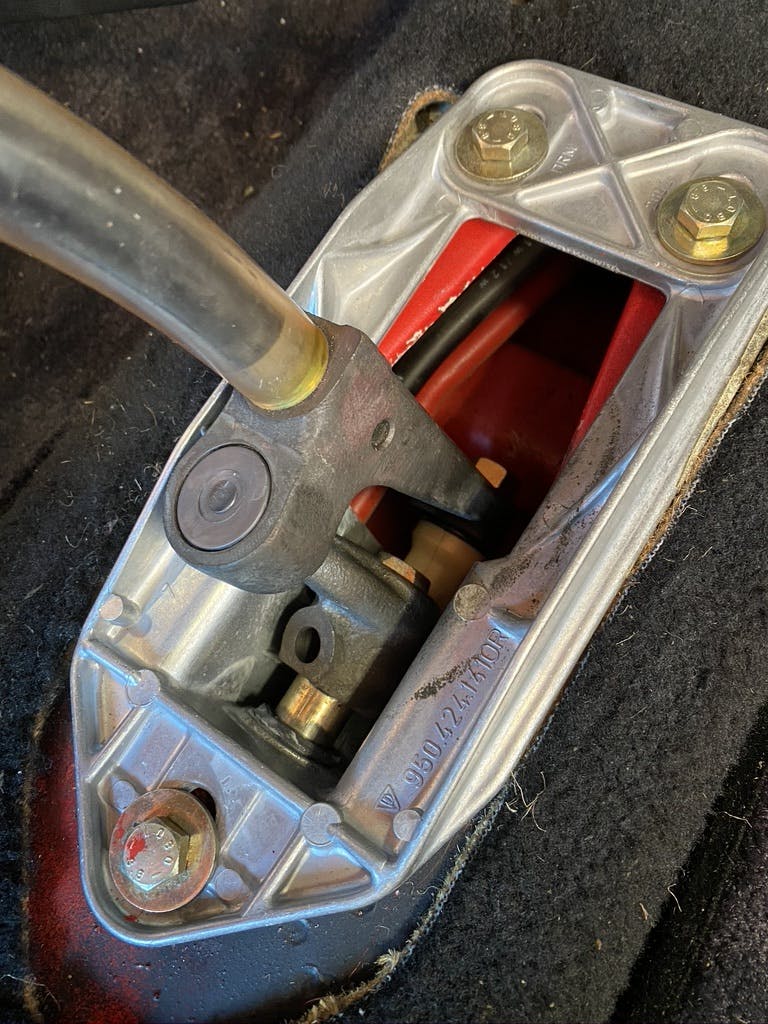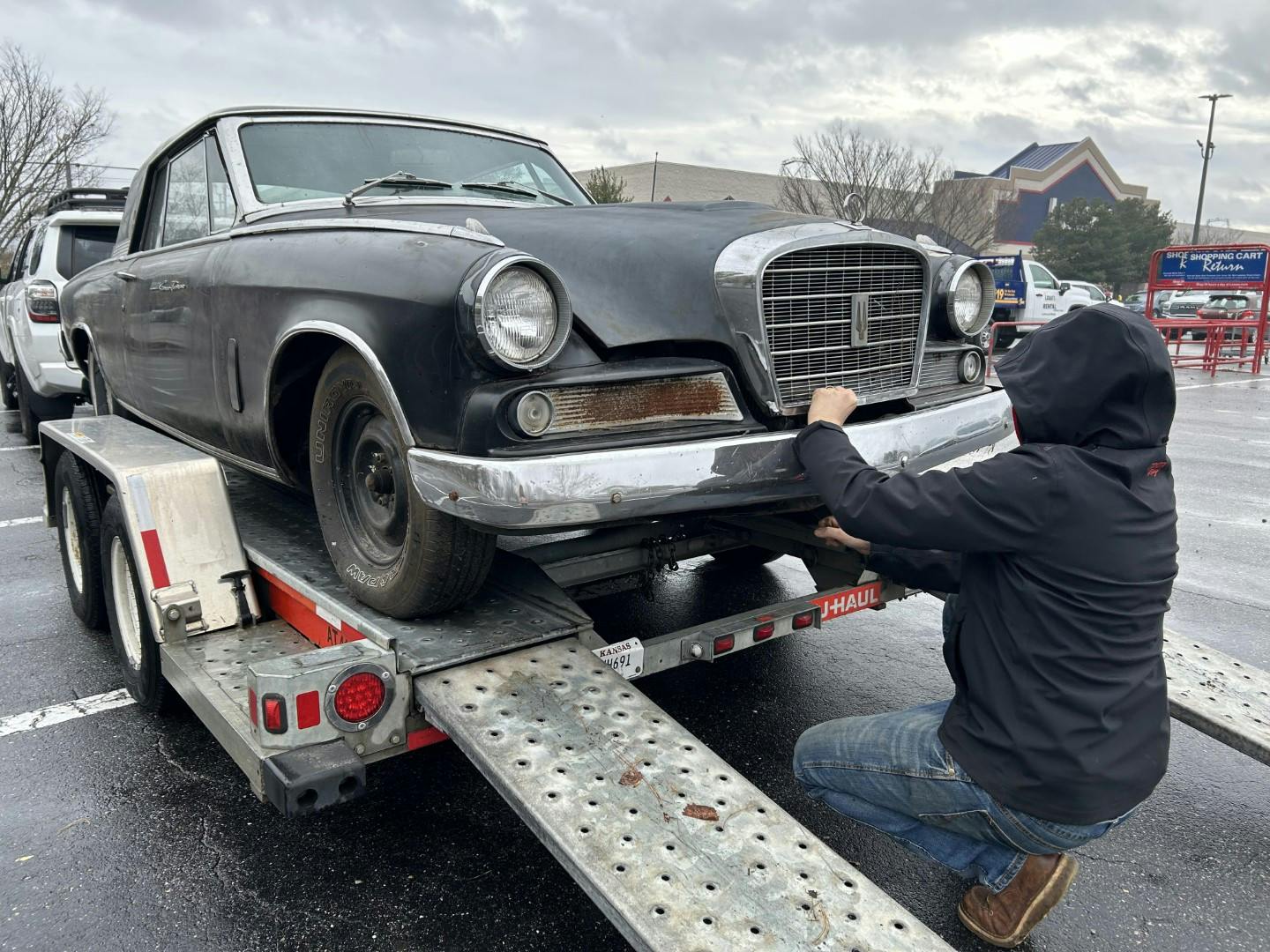6 Adjustments You Forgot About on Your Vintage Car
Cars, especially vintage ones, were built with a certain amount of regular maintenance in mind. As our daily drivers slip further and further into the black hole that is things like “lifetime transmission fluid” and items that require more calibration than actual maintaining, it gets easier to forget all the items that should be kept up on our fun-to-drive cars. Always on the look out for you, we took a moment to make a quick reminder list of items worth checking … especially if you can’t remember the last time.
Door Strikers

Look, we aren’t going to get into a long-winded discussion about how gravity seems to get stronger as we age, instead we are just pointing out that the same forces are applied to our cars, too. Doors can sag a bit with use even with perfect, well-adjusted hinges. Taking a minute to properly align the striker and latch on your doors will pay back tenfold every time you get in and out. If the striker and latch just won’t line up like they should, be sure to check the condition of the hinges and pins prior to modifying the striker or latch to make it work; the latch can only compensate for so much sag from the hinges.
Clutch Pedal

There are several methods of transferring and multiplying the driver’s left-leg force to connect and disconnect the engine from the transmission. Whether cable, hydraulic, or rod linkage, there is likely an adjustment that can be done to ensure that the clutch is being operated as designed. In addition to helping ensure those parts have long lives, this will also allow the pedal to do its job by putting the engagement point in a nice place and making the car easier to drive. Take a moment to grease or lubricate any pivots, and don’t be surprised if you have to re-learn how to drive your own car.
Shift Linkage

Driving a manual transmission can be so rewarding and fun, but those feelings rarely come from shifters that have all the tactility of a knife in a jar of peanut butter. Is that third? Fifth? I didn’t even think this car had a fifth gear?
Shifter adjustment and maintenance is often a little finicky due to having to deal with the center console, but it’s worth the effort. New bushings go a long way for most shifters, but an old rod-actuated transmission might need nothing more than just double checking the rods are the correct length, clean, and not binding. You might not think your shifter is so bad, but this is one of those circumstances where the parts wear slowly and we often don’t notice it fading over time. Also worth noting: Check forums or clubs for potential shifter upgrades. There always seems to be someone re-engineering a shifter and selling kits to improve the feel or durability.
Steering Box


Keeping a bias-ply-shod car between the lines can be tough enough at times, and slop in the steering box can only make things worse. The steering gearbox is a relatively simple part of a car, but like every other piece there is wear that adds up over time. Often the resulting “slop” in the steering feel is just chalked up to “old car feel” rather than dealt with appropriately.
There are a lot of types of steering boxes and arrangements, so unfortunately we can’t give a short how-to here. Refer to your favorite service manual or marque expert for the process and potential common pitfalls before attempting a DIY adjustment. Steering boxes are precision and are often adjusted as such. If in doubt, take it to a pro.
Headlights
For fear of late-night animal crossings, or just the numbers of bugs that accumulate across a delicate chrome grill, it seems most vintage rides rarely stay out past dusk. Even if you plan to stick to a curfew for your old car’s entire life, being prepared to brake it is still a good practice and that means you need to be able to see. Well-aimed headlights can make a huge difference in overall effectiveness and visibility—both the good and the bad kind: Your light should be showing you the road rather than potentially blinding oncoming traffic. We want to been seen while driving, but a headlight pointed right at other drivers isn’t the best way to go about it.
Hood Latch

While you’re up by the front taking care of those headlights, be sure to take a moment and pop the hood to check the latch is in good shape and holds properly. A hood flying up and over is not a situation that anyone wants to be in while driving, especially not in their vintage car. And that’s before we talk about repairs.
Instead, double check that the mechanism moves freely, and that the latch attached to the hood is both secure and hitting the appropriate place when closing. Use lubrication appropriate for the situation and drive a little easier knowing your hood will be staying right where you put it.
***
Check out the Hagerty Media homepage so you don’t miss a single story, or better yet, bookmark it. To get our best stories delivered right to your inbox, subscribe to our newsletters.



Next week: “The 7 Ways You’re Using your Classic’s Ashtray Wrong”
Keep in mind that some services recommended to be done by mileage when the car was new, should now be considered due by time. For instance – brake fluid or anti-freeze.
Don’t forger the U joints. Mine have been replaced and have grease fittings which I pump up once a year.(as long as the person who replaced them oriented them in the right direction so you can get the gun on them)
There is another critical item that younger classic car owners would not know(under 60). Valve Adjustments. Many cars had solid lifters and need simple adjustments. Most people are not familiar with simple feeler gages used in making the gap
adjustment
Many people neglect valve adjustment on Chrysler, Dodge and Plymouth slant six engines which used solid lifters until 1980; I’ve educated some repair shops with this fact. Neglect of this service was common.
If you own a convertible, the top mechanism and latches occasionally require attention.
Very true, this is a great addition forgotten by a non-convertible owner!
My father, who never even checked his own oil until we entered this hobby, was always conscious of headlight alignment. I believe he said the left light should be aimed at the curb and the right one should be aimed down the road. Is that correct? I was hoping this article would mention that detail.
With apologies to the Ghostbusters: Don’t Cross The Beams! The light particles will bounce off one another and you won’t know where they’ll end up… 🙄
Why is the Studebaker on the trailer backwards?
Because it wasn’t running and that was the best way to get it on the
trailer.
Don’t forget manual adjustment brakes & valve adjustment
I’m due on my ‘47 Willys-Overland CJ2A
Good tips for beginners that us OG’s learned the hard way!
Belt adjustments. Effects cooling and electrical system.
👍
What i “Almost” never hear about is a Proper Lube job on older cars–I’m talking about Grease into fittings (replacing some grease nipples when they are blocked-
Going down a hill in a 66 Caprice after bottoming out at a crossroad and no brake and that’s the last year of the single line cylinder probably wouldn’t be here if that e-brake failed!!!
Good reading. If it don’t apply to your car, just go to next item.
My 52 Dodge Coronet has 4 on the column. Factory Gyromatic.
Shift linkage. This recalls an amusing tale from my days working in a car dealer in the early 80s. We had a late 60s VW bus on the used lot that no one could drive nor would it sell. It would sit until the tires went flat and green moss grew all over it. The mangers said it needed a transmission. I was a detailer and during a slow week I decided the old bus should be cleaned up. I aired up the tires in the line and jump started the old van. I found that being forceful with the shifter resulted in frustration. It turned out it was an acquired skill of easy light touched finger pressure to ease the gears into place. I got good at it and even drove it into town occasionally for errands. I became the sole person who maintained it due to my new found driving skill. The managers refused to replace the old bent linkage so the bus sat again. Until the day that two nuns came in looking for just that sort of rig to go on a pilgrimage to Mexico. The salesman thought they were nuts but asked me to share my expertise with the nuns on how to drive the thing. Anyone who has known how resourceful nuns can be knows the outcome. Sister Mary picked up the secret right away and was zipping around the lot within a few minutes. I mentioned to them the name of a local VW expert who could go through the old van and make it reliable. They bought the van at a fire sale price as the manager wanted it gone and the last I heard they got all the way to Mexico without issue.
Hallelujah!
Funny to think that a late ‘60s VW van is now a cult object that would not sit on a dealer lot for a week…